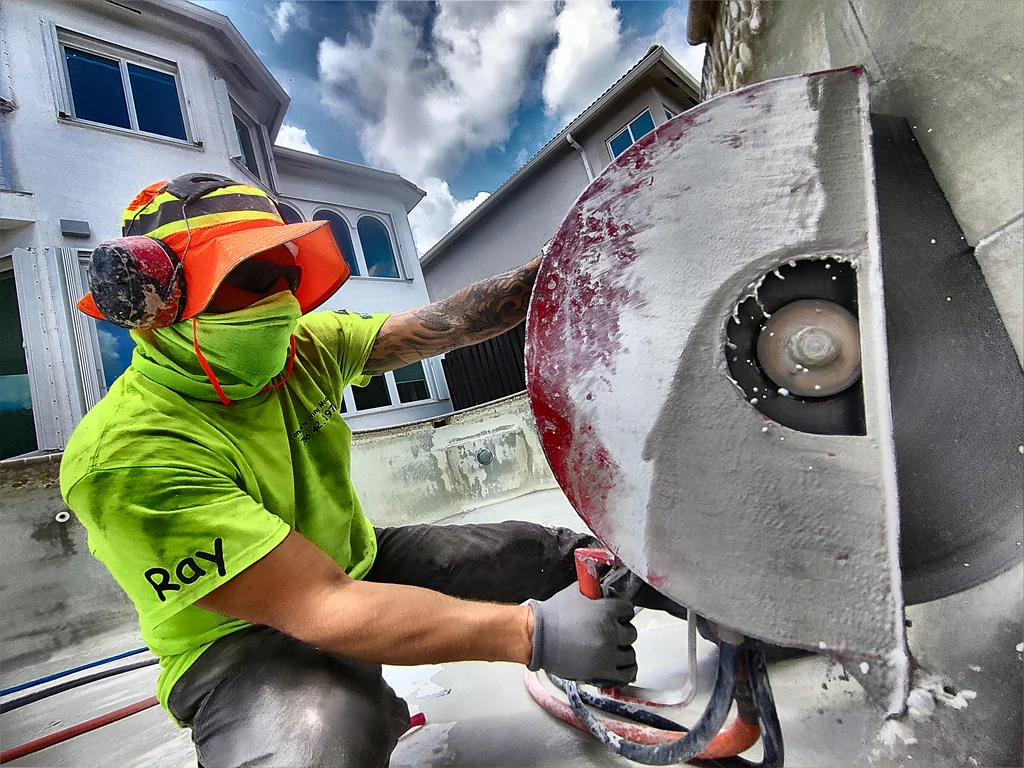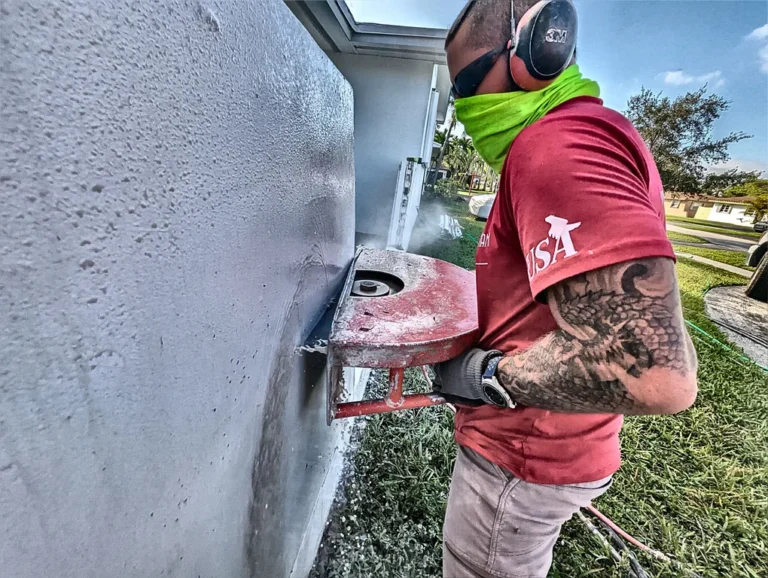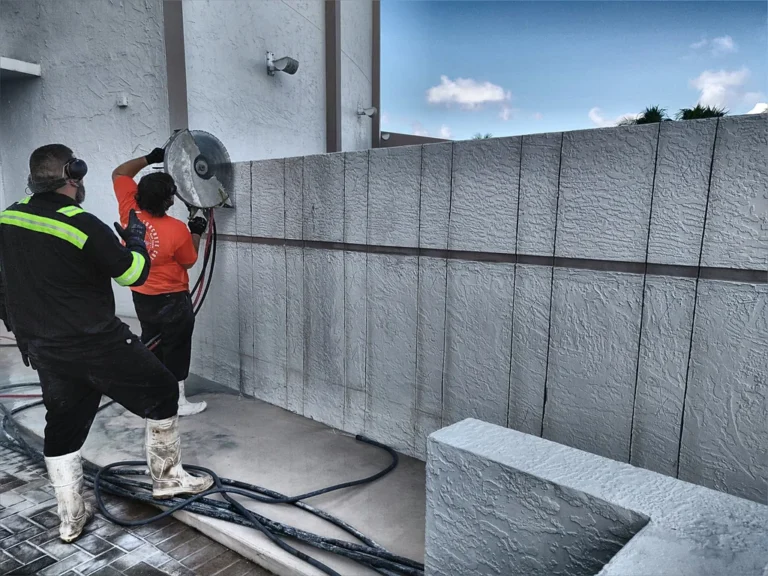In a city like Miami, where structures must withstand everything from tropical storms to the corrosive effects of salt air, concrete is rarely used without reinforcement. Rebar (reinforcing steel bar) provides the tensile strength necessary for durable, resilient construction. However, when it’s time to renovate, modify, or demolish, this reinforcement turns a simple cut into a technical challenge.
For contractors and property owners, the question is always the same: Is it possible to cut through both the aggregate and the steel efficiently, safely, and without damaging the structural integrity? The short answer is yes—with the right tools and expertise, which are part of the larger field of concrete cutting techniques.
The Rebar Reality: Can a Concrete Saw Slice Through Steel?
It is one of the most common questions in the industry: Can a concrete saw cut through rebar? Absolutely. Modern diamond-tipped tools are engineered precisely for this dual purpose. Unlike older abrasive blades that would quickly dull or shatter when hitting steel, today’s diamond segments are tough enough to slice through rock, aggregate, and steel reinforcement alike.
Ignoring the rebar and trying to navigate around it is not an option; it risks a compromised cut, structural instability, and excessive time on the job site. The professional approach focuses on the technique of cutting through rebar directly, ensuring a clean, precise separation every time.
The Precision Arsenal: Choosing the Right Tools
The choice of equipment is paramount when dealing with reinforced concrete in South Florida. The complexity of the job—from breaking ground to vertical wall cuts—will dictate the necessary arsenal.
1. The Power of Diamond Blades
For most flatwork—like driveways, foundations, and slicing a section for pool deck removal—a slab saw fitted with a premium diamond blade is the standard. The water used in wet cutting cools the blade and suppresses harmful silica dust, which is critical in a busy urban environment like Miami.3 The powerful concrete chainsaw is also frequently used for deep, reinforced cuts.
2. Specialized Demolition Equipment
When a project requires full structural removal, like indoor pool removal, contractors must section the large, reinforced concrete shell. For breaking up small sections or cleaning up edges after a saw cut, manual tools are sometimes necessary, though breaking concrete with hand tools should be reserved for minor chipping only. For larger volume removal, the most effective method involves the strategic use of slab saws followed by powerful jackhammers to facilitate chipping concrete slabs into manageable pieces.
3. Targeted Applications
Concrete is cut for many reasons beyond simple removal. Utility work, for instance, requires surgical precision. Whether it’s drilling perfect circular holes for pipes (core drilling) or slicing an opening for drainage, knowing how to cut concrete pipes safely and accurately prevents costly damage to surrounding infrastructure. Similarly, complex residential projects often involve specialized tasks like how to cut window openings in concrete walls to capture the sought-after ocean views.
Navigating Logistics: Safety, Debris, and Cost
Any major structural modification in Miami carries logistical burdens that must be addressed professionally to maintain compliance and safety standards.
Safety and Debris Management
Cutting reinforced concrete generates significant waste. Beyond the immediate health concerns of silica dust, proper removal and disposal of concrete debris is a non-negotiable step. A professional operation ensures debris is hauled away cleanly and responsibly, often for recycling.
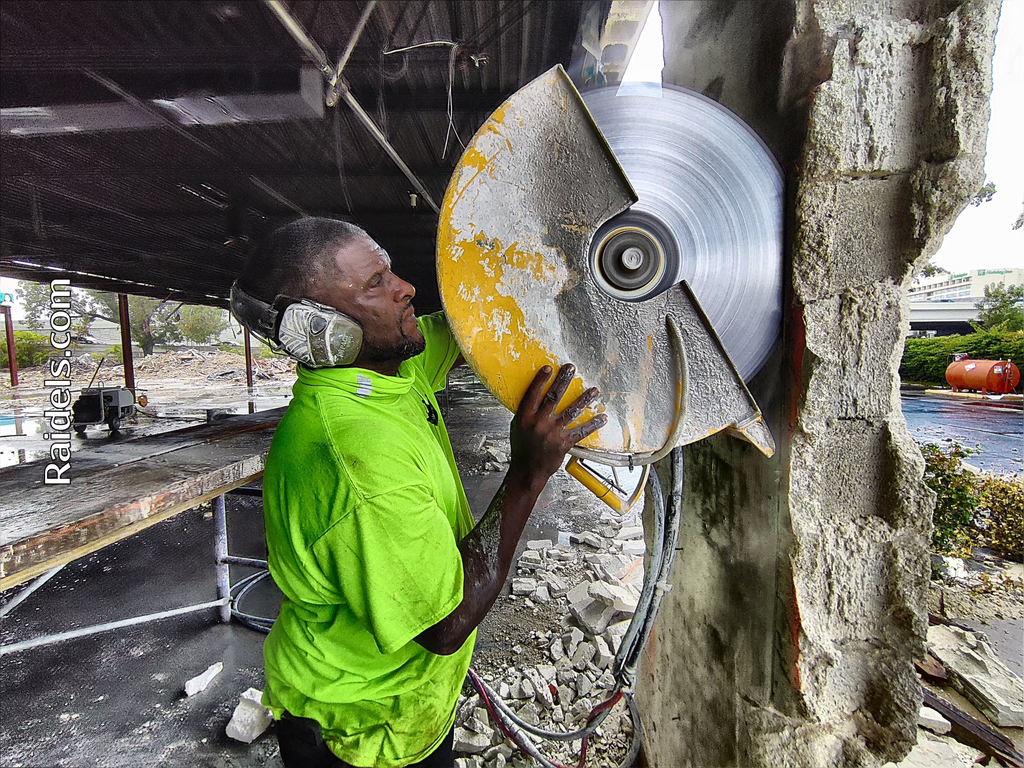
The Cost Factor
For any client, understanding the financial scope is key. Factors like the depth of the slab, the density of the rebar, and the specialized equipment needed all determine how much does concrete cutting cost in Miami? Providing a transparent quote that accounts for the complexity of reinforced materials builds client trust and ensures the job is done right the first time.
By mastering the science of reinforced concrete cutting, Miami contractors don’t just clear obstacles—they create opportunities for development and structural renewal across the city.
